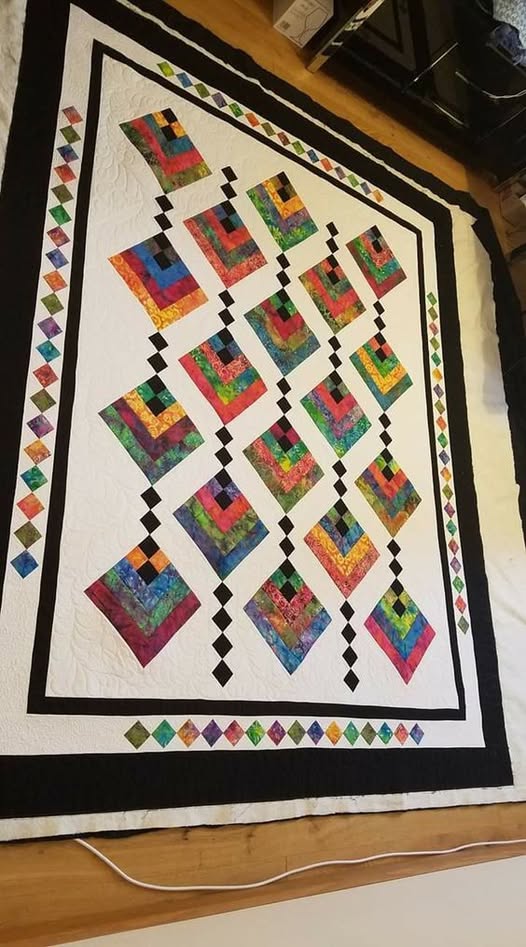Quilting is a timeless craft that brings warmth, creativity, and joy to many enthusiasts. If you are looking for a vibrant and cheerful design, the Joy Quilt – Free Pattern is the perfect project to brighten your space. This tutorial will guide you through the entire quilting process, from fabric selection to finishing touches, ensuring that even beginners can follow along with ease.
The Joy Quilt pattern is all about radiating positivity and happiness. With a mix of bright and contrasting colors, it creates a stunning visual effect that captures attention. Whether you are making it for yourself or as a gift, this quilt is sure to spread joy.
Using quilt patterns that incorporate a variety of hues can enhance the overall aesthetic. Consider using a mix of solids, florals, and geometric prints to add depth and dimension. Selecting fabrics that complement each other will ensure a balanced and cohesive final piece.
Additionally, this pattern is versatile and can be customized to suit different themes and color palettes. Whether you prefer a bold modern look or a softer pastel tone, the Joy Quilt allows for endless creativity.
Before diving into the quilting process, gather all necessary materials. You will need fabric, batting, backing, thread, and a rotary cutter. A well-prepared workspace will make the process smoother and more enjoyable.
Choosing high-quality cotton fabric ensures durability and ease of sewing. Consider pre-washing your fabrics to prevent shrinkage and color bleeding. Having a cutting mat and quilting ruler will also help in achieving precise measurements.
Additionally, using the right thread and needles will make a significant difference in the final product. Cotton thread is ideal for quilting, while a 90/14 needle works well for piecing and stitching.
Accurate cutting is crucial for creating a well-structured quilt. For the Joy Quilt, follow these measurements:
Using a rotary cutter and a ruler ensures clean, straight edges. Stack multiple layers of fabric when cutting to save time and maintain consistency. Marking your fabrics with a fabric-safe pen can also help in keeping track of each piece.
Once all fabric pieces are cut, lay them out in your desired pattern to visualize the final arrangement. This step helps in adjusting color placement before sewing.
Begin by sewing the 8” x 8” squares together in rows using a ¼-inch seam allowance. Press seams open or to one side for a flatter finish. This step creates the quilt’s foundation.
Next, sew the rows together to form the main quilt top. Pinning pieces before stitching prevents shifting and ensures alignment. Consistent seam allowances are key to achieving a professional look.
Once the squares are assembled, attach the 3” x 40” border strips to frame the quilt. Adding borders enhances the structure and gives the quilt a polished appearance.

Layering your quilt properly ensures a smooth and durable finish. First, lay the quilt backing fabric right-side down, followed by the batting, and then place the quilt top right-side up.
Smooth out any wrinkles and use safety pins or basting spray to hold the layers together. This step is essential in preventing fabric shifting during quilting. The batting provides warmth and adds texture to the quilt.
If you prefer a softer quilt, opt for lightweight cotton batting. For a thicker and warmer quilt, wool or polyester batting works well.
There are multiple ways to quilt the layers together. Straight-line quilting, free-motion quilting, or hand-quilting are all great options depending on your preference.
For a beginner-friendly approach, straight-line quilting along the seams works beautifully. Stitching in the ditch (along seam lines) creates a neat and structured appearance. Using a walking foot attachment helps in even feeding of fabric layers.
If you enjoy decorative stitching, try free-motion quilting with a darning foot. This method allows for creative patterns such as swirls, loops, or floral designs, adding a unique touch to your quilt.
The final step in the Joy Quilt pattern is binding the edges for a clean finish. Cut binding strips measuring 2.5” x width of fabric, sew them together, and fold in half lengthwise.
Attach the binding by sewing it to the quilt’s edges, folding it over to the back, and stitching it down by hand or machine. Using binding clips can help secure the fabric and ensure an even finish.
Taking your time with the binding process results in a professional-looking quilt. The binding not only enhances the design but also reinforces the quilt’s durability.
Completing a Joy Quilt – Free Pattern is a fulfilling experience that showcases your creativity and craftsmanship. Whether it’s for personal use or a thoughtful gift, this quilt is sure to bring warmth and happiness.
[botao link={https://hookedoncrafts.dicasdorei.com/wp-content/uploads/2025/02/Joy-Quilt-Instructions.pdf} texto={PATTERN HERE} corfundo={#183396} corletra={#fff}]
Experiment with different quilt patterns to create unique variations of this design. Each quilt you make carries a story and a piece of your artistic expression.
Start your quilting journey today and experience the joy of creating something truly special!